Abstract
Seventeen patients with postcholecystectomy pain and nine controls were studied by nonoperative biliary manometry with stimulation of sphincter of Oddi spasm by morphine. The controls remained asymptomatic despite an elevation of bile duct pressure after morphine. In 13 patients with postcholecystectomy pain, morphine induced pain paralleling a pressure rise. Three other patients had pain not paralleling a pressure change, and another showed a pressure rise without pain. None of the controls, four with the parallel pain-pressure change, and one with the discordant pain-pressure correlation were positive at the traditional morphine-Prostigmin test. Endoscopic sphincterotomy provided complete (8), moderate (3), or slight (1) relief of pain to 12 patients with the parallel pain-pressure relationship. Postsphincterotomy manometry showed disappearance of both the pressure elevation and pain induction, and the morphine-Prostigmin test turned negative. It is concluded that morphine-induced bile duct pressure elevation coinciding with pain is diagnostic of sphincter spasm as a cause of postcholecystectomy pain, the morphine-Prostigmin test, although helpful, is less specific and less sensitive in diagnosing sphincter spasm than the manometry, and endoscopic sphincterotomy relieves the pain due to this condition in most cases.
Full text
PDF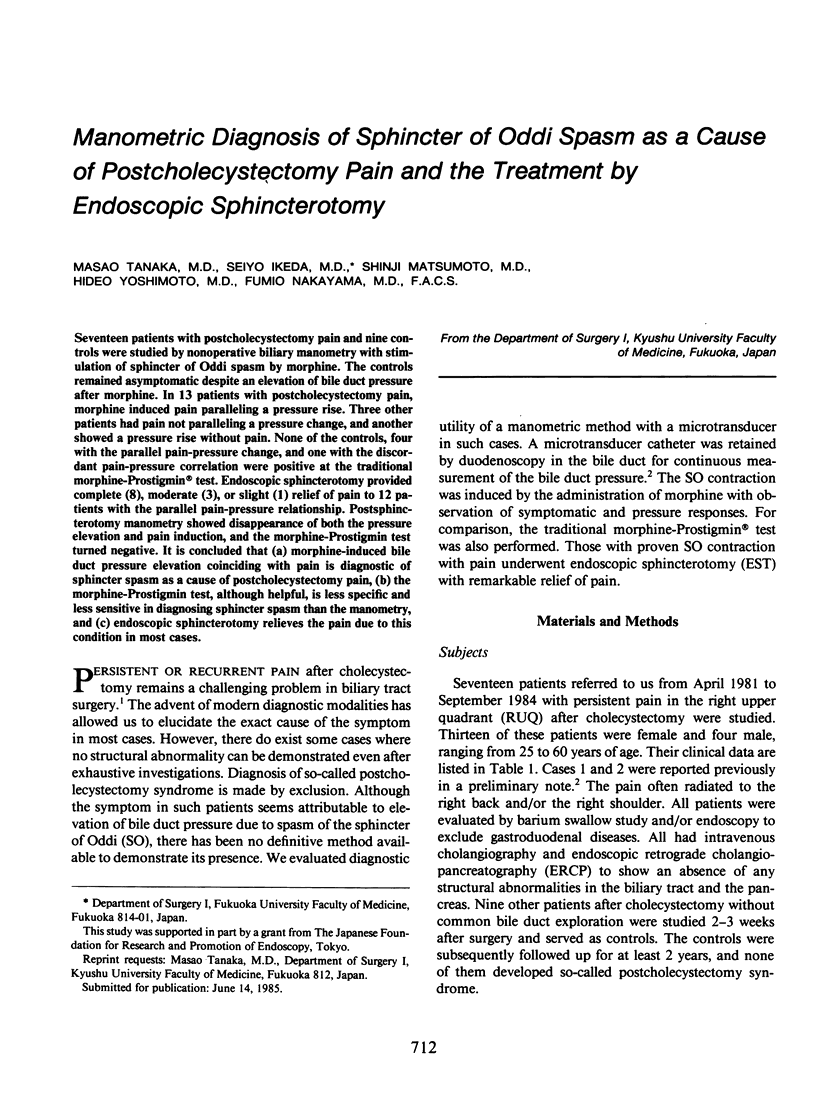
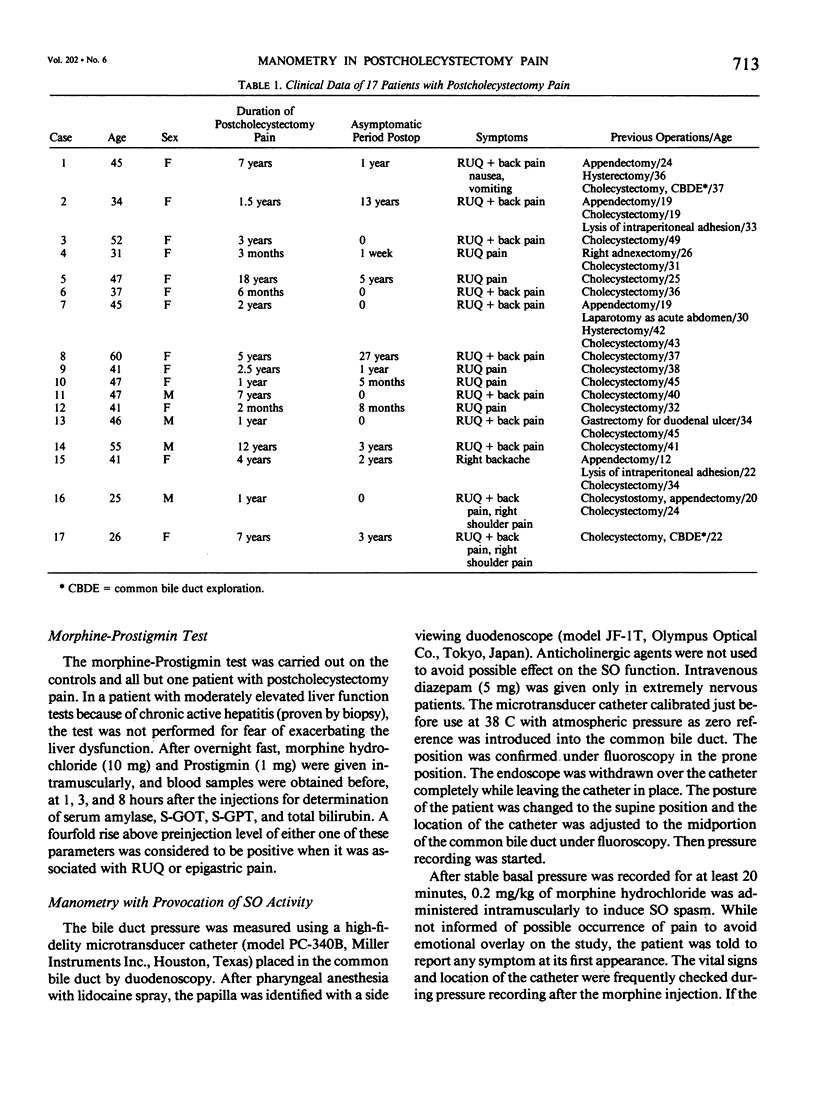
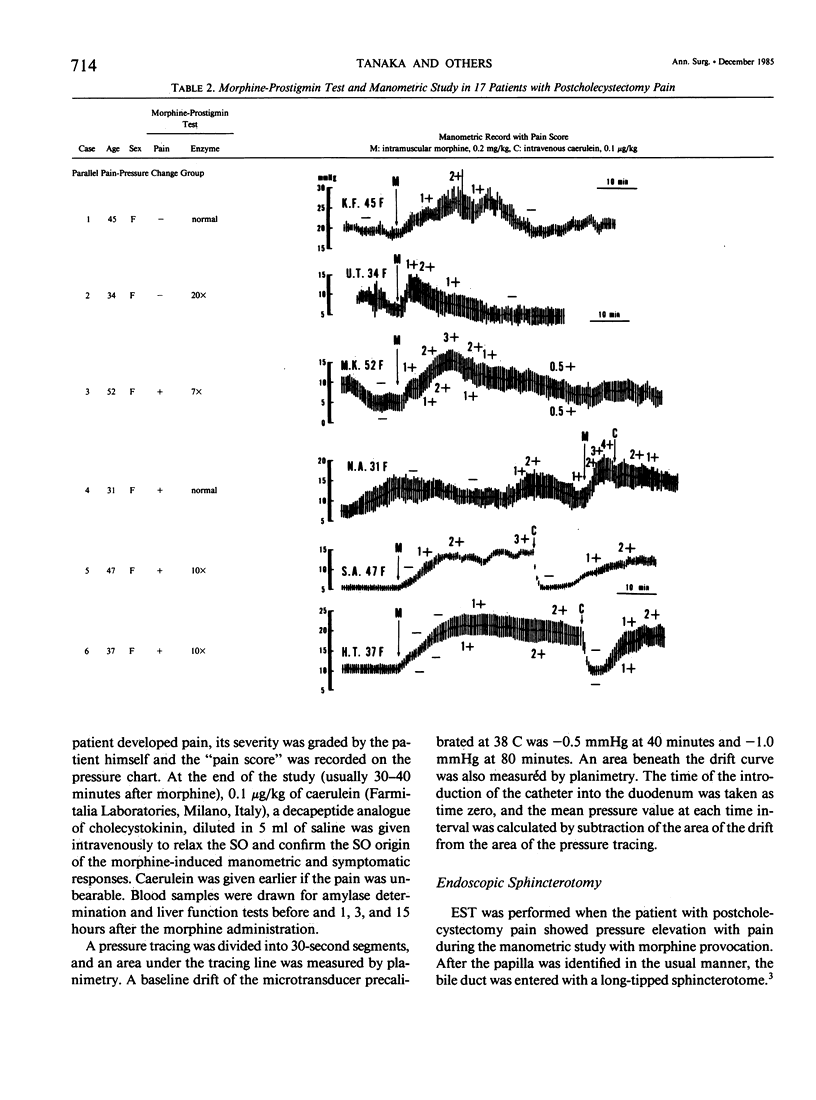
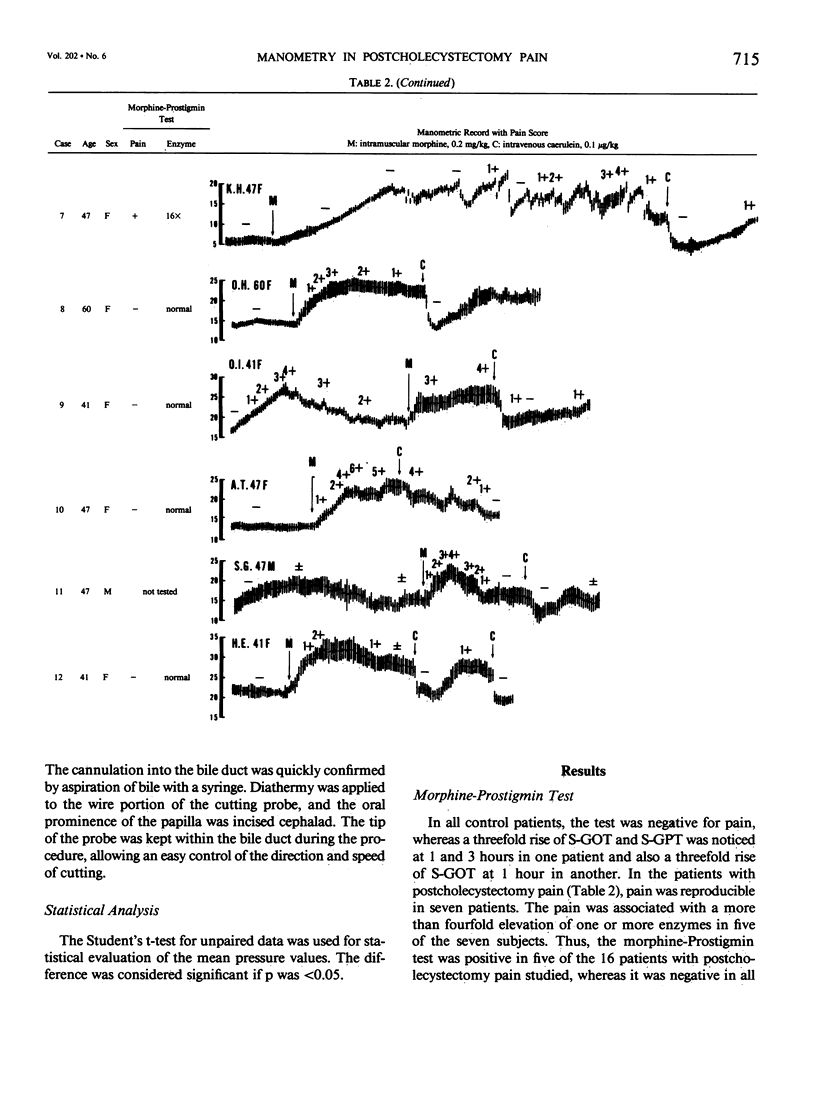
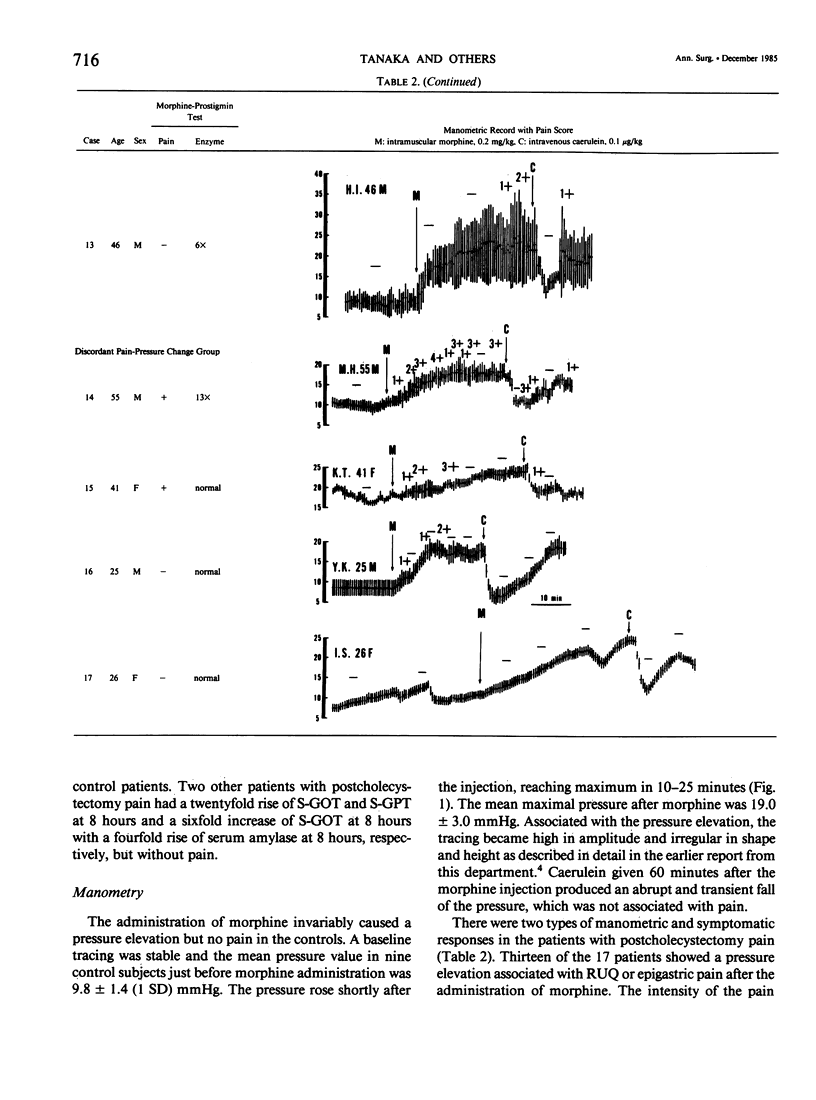
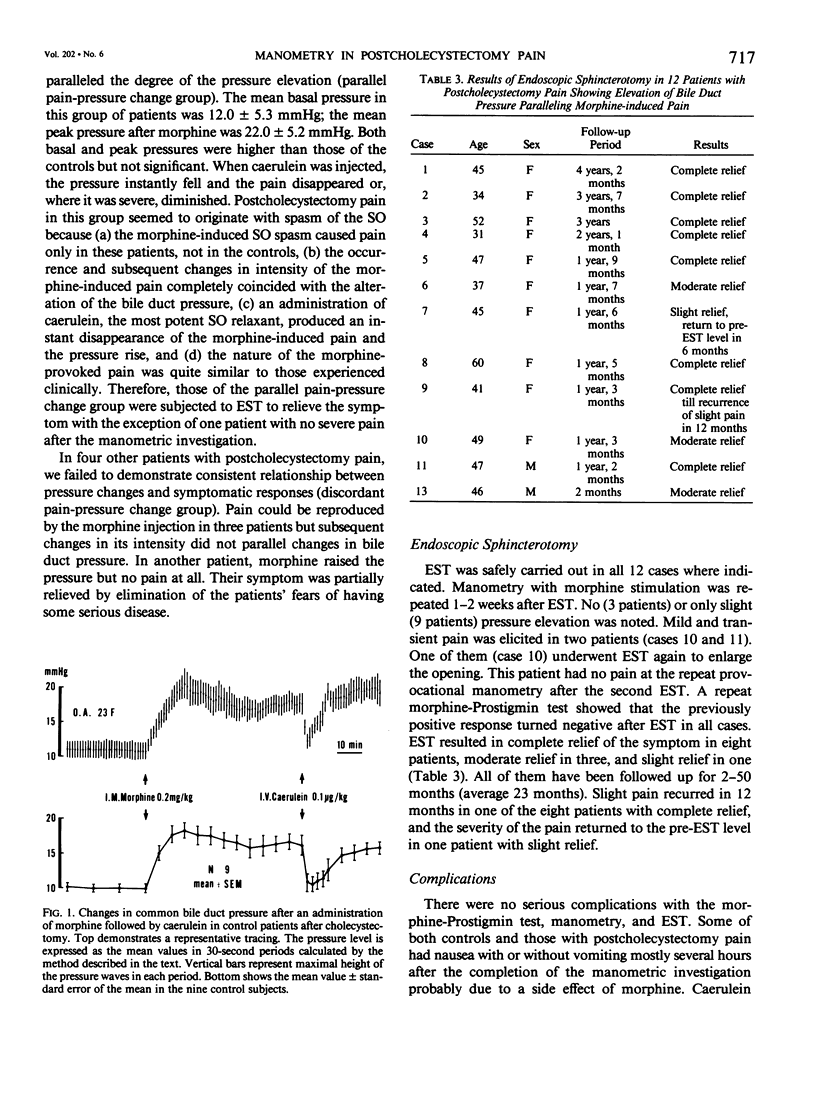
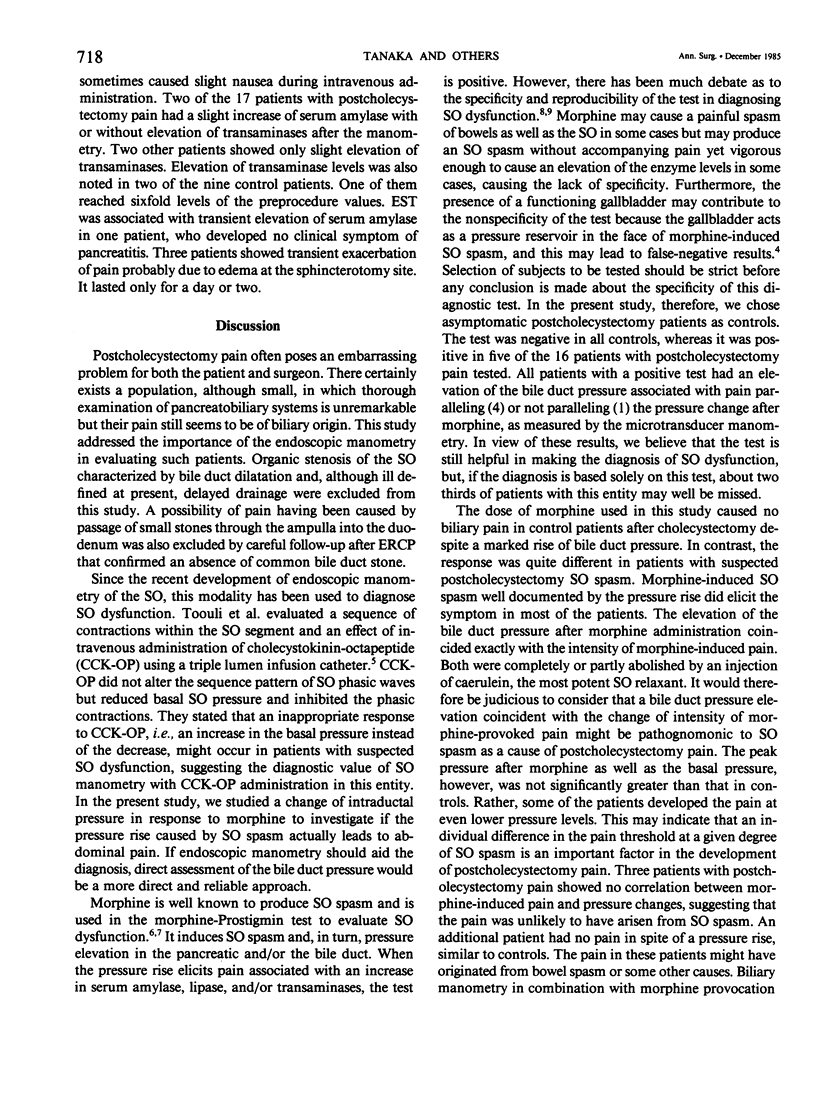
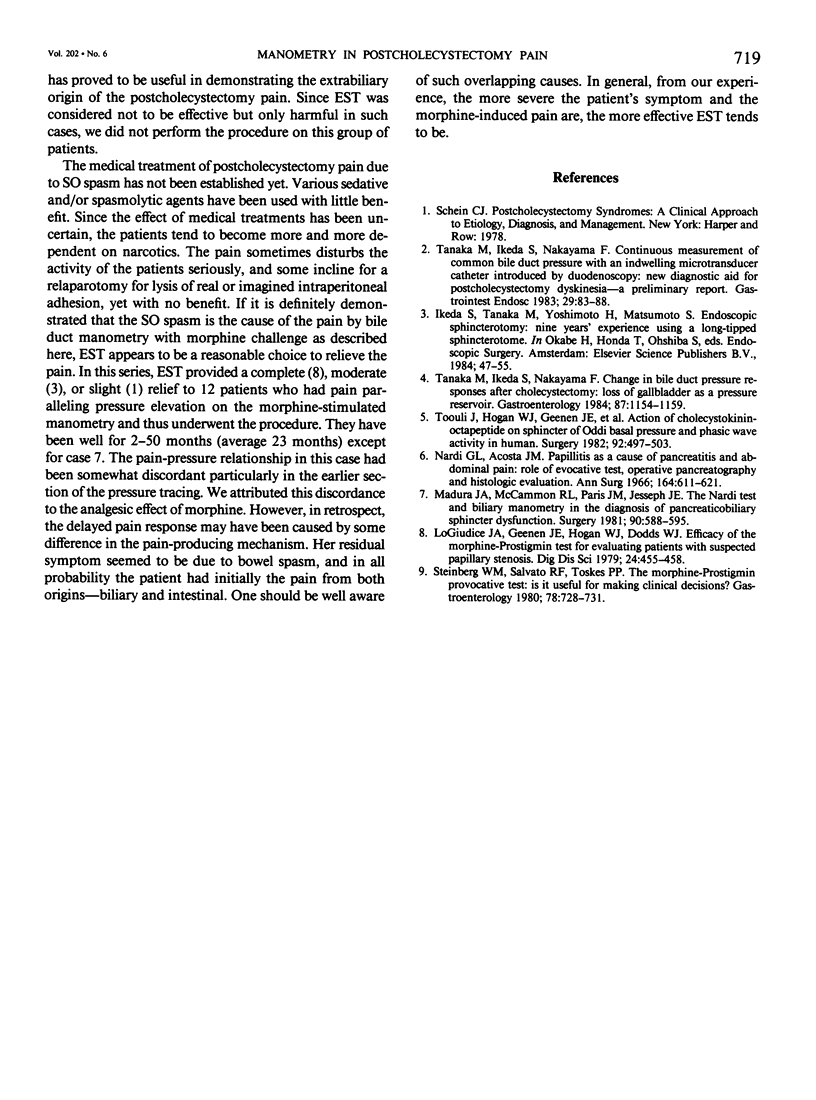
Selected References
These references are in PubMed. This may not be the complete list of references from this article.
- LoGiudice J. A., Geenen J. E., Hogan W. J., Dodds W. J. Efficacy of the morphine-prostigmin test for evaluating patients with suspected papillary stenosis. Dig Dis Sci. 1979 Jun;24(6):455–458. doi: 10.1007/BF01299827. [DOI] [PubMed] [Google Scholar]
- Madura J. A., McCammon R. L., Paris J. M., Jesseph J. E. The Nardi test and biliary manometry in the diagnosis of pancreaticobiliary sphincter dysfunction. Surgery. 1981 Oct;90(4):588–595. [PubMed] [Google Scholar]
- Nardi G. L., Acosta J. M. Papillitis as a cause of pancreatitis and abdominal pain: role of evocative test, operative pancreatography and histologic evaluation. Ann Surg. 1966 Oct;164(4):611–621. doi: 10.1097/00000658-196610000-00008. [DOI] [PMC free article] [PubMed] [Google Scholar]
- Steinberg W. M., Salvato R. F., Toskes P. P. The morphine-prostigmin provocative test--is it useful for making clinical decisions? Gastroenterology. 1980 Apr;78(4):728–731. [PubMed] [Google Scholar]
- Tanaka M., Ikeda S., Nakayama F. Change in bile duct pressure responses after cholecystectomy: loss of gallbladder as a pressure reservoir. Gastroenterology. 1984 Nov;87(5):1154–1159. [PubMed] [Google Scholar]
- Tanaka M., Ikeda S., Nakayama F. Continuous measurement of common bile duct pressure with an indwelling microtransducer catheter introduced by duodenoscopy: new diagnostic aid for postcholecystectomy dyskinesia--a preliminary report. Gastrointest Endosc. 1983 May;29(2):83–88. doi: 10.1016/s0016-5107(83)72537-x. [DOI] [PubMed] [Google Scholar]
- Toouli J., Hogan W. J., Geenen J. E., Dodds W. J., Arndorfer R. C. Action of cholecystokinin-octapeptide on sphincter of Oddi basal pressure and phasic wave activity in humans. Surgery. 1982 Sep;92(3):497–503. [PubMed] [Google Scholar]


